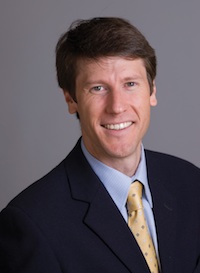 Small rural papers can have a level of reader engagement that would be the envy of their larger peers. If you’re the newspaper of a town with 12,000 or so people — like, say, The Washington Daily News in Washington, N.C. — you likely have a stronger connection with your audience than a large metro can. Ryan Thornburg, a professor of online journalism at the University of North Carolina, wants to build off that relationship.
Small rural papers can have a level of reader engagement that would be the envy of their larger peers. If you’re the newspaper of a town with 12,000 or so people — like, say, The Washington Daily News in Washington, N.C. — you likely have a stronger connection with your audience than a large metro can. Ryan Thornburg, a professor of online journalism at the University of North Carolina, wants to build off that relationship.
“In small communities, when people read where a building permit is, they know where the land is and the person who owns the shop,” Thornburg told me. “There’s already a social story that they don’t have to have explained.”
What’s tricky is finding all that public data — property records, tax bills, construction permits — in one place, or in one format, online. That’s the goal of OpenBlock Rural, the Knight News Challenge-winning project that aims to increase access to public records in small communities by adopting the EveryBlock model.
With the two-year, $275,000 grant from the Knight Foundation, the project will build a platform to collect and release public data in conjunction with rural newspapers. Thornburg is leading OpenBlock Rural along with Penny Abernathy, the Knight Chair in Journalism and Digital Media Economics at UNC. In the first stage of the project, they’ll try to figure out the state of records in several smaller counties in North Carolina, namely what format files are in and if any are available online. In the second phase, they’ll develop software based on OpenBlock for partner newspapers to use.
Thornburg said the conditions are right at rural papers for a project like this, which can lend technical expertise to small newsrooms and create valuable content for websites. “What we’re hoping to do is develop something that is easy for them to administer getting records in and having the editorial discretion about what gets shown on their site,” he said.
The idea for OpenBlock Rural came about through discussions with Abernathy, about how rural papers — circulation around 10,000 or less — weathered the changes taking place in the broader journalism industry. What they found is that smaller papers may not have been hit as hard in the area of classifieds and advertising as larger outlets, but that changes in the way readers discover and consume news were just the same. The disadvantage to smaller papers is the lack of staff and other resources to experiment with new ways of presenting stories and data, Thornburg said.
“We see our role as bridging the gap between the developers and newspaper editors by getting them to speak the same language,” Thornburg said. They would like to go one step better by making OpenBlock Rural a valuable opportunity for advertisers. By creating a product that draws a larger audience, newspapers could create new advertising or sponsorship opportunities around the product, Thornburg said.
While the EveryBlock model fits for the news and information goals of the project, the actual geographic borders are a little trickier. The idea of EveryBlock is to give life to all the news and data that defines your, well, block, which is an easily quantifiable in a city setting. The challenge in OpenBlock Rural, Thornburg said, is resetting those boundaries. “What does it mean to have a neighborhood in areas that don’t define themselves by blocks, but define themselves by rural routes and other ways,” he said.
OpenBlock Rural will build on the work of OpenBlock, a separate Knight-funded project to make EveryBlock’s code base more easily usable by developers — making this a third-generation Knight-funded project.
Though OpenBlock Rural could easily stand alone as its own site, the idea is to create software that supports and enhances local news organizations. Thornburg said it would be wrong to distinguish between data and destination, as readers for rural newspapers already have a connection with their paper that is built on trust and knowledge.
“We’re going to work with incumbent news providers wherever possible because a lot of getting the information we need, and being successful, is in having an understanding of the community that they already have,” Thornburg said